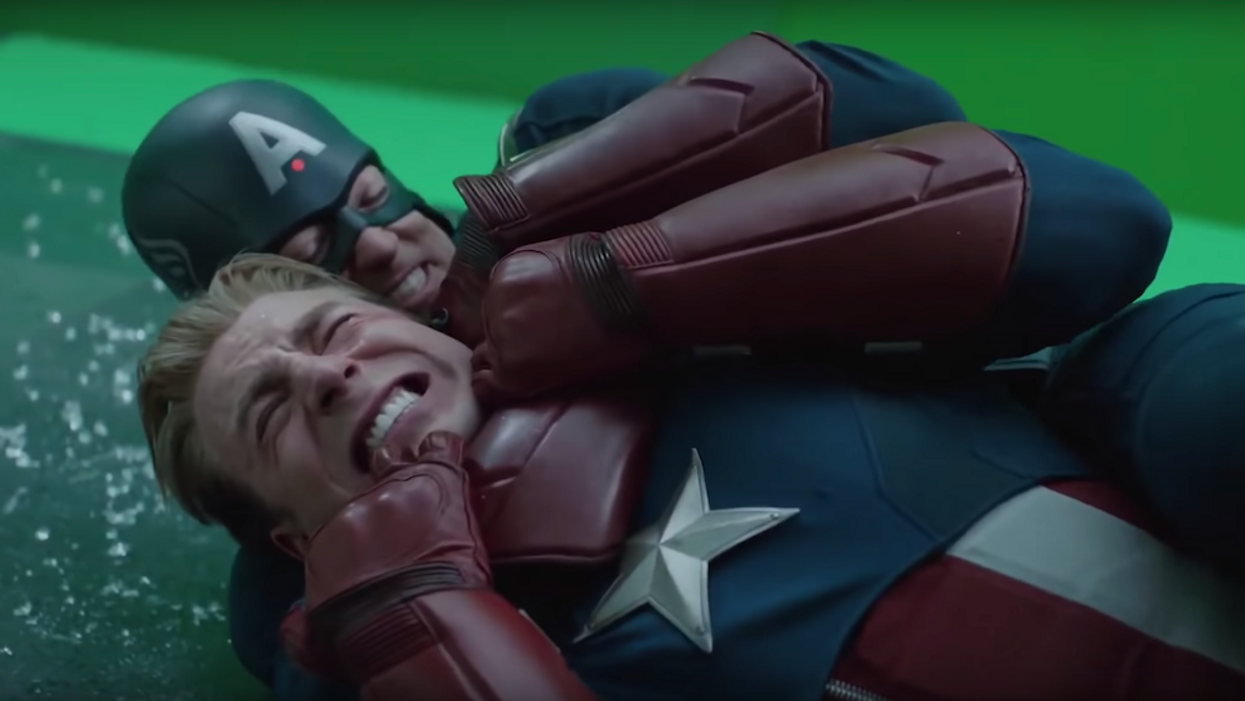How the 'Avengers: Endgame' Visual Effects Came Together
Jen Underdahl, the Visual Effects Producer for Marvel, provides a look at the impressive visual effects featured in "Avengers: Endgame" and "Infinity War."

Avengers: Endgame is the biggest movie of all time. It also had one of the biggest budgets. A movie this size takes a ton of people to put it together and make sure everything looks real and inspiring. To do that, they enlist the help of Jen Underdahl.
Underdahl is Marvel's Visual Effects Producer. It's her job to bring all the visuals of the movie together and make sure the directors and other producers love what hits the screen.
In this video from Wired, Underdahl walks us through the process of creating "Smart Hulk," making Chris Evans look considerably older, and how they were able to digitally create the entirety of the Avengers' time suits.
All pretty cool things!
So watch the video and let's talk after the jump!
How the Avengers: Endgame Visual Effects Came Together
When we wrote about Markus and McFeely, they talked about how they saw Infinity War and Endgame as two separate movies. But in this video, Jen talks about how the VFX for them both blended together into a single project for her.
Part of the reason this happened was that they had to spend a lot of time building and creating Thanos for both films.
You can't just have Josh Brolin show up and do his lines in a mo-cap suit. First, they had to do extensive tests to see what CGI could do for them. So much of what made Thanos real is attributed to the technical discoveries made along the way.
Jen brought WETA in to help them solidify what we saw on the screen.
WETA and Marvel decided they wanted to have Brolin on screen with other actors because they wanted this movie to feel real. And certain expressions and physical cues could only be achieved with Brolin working with the other talent.
So, not only did they have to build a digital form of him, but they also had to build a fake 15-foot suit so eyelines would match and so would his hand and feet movements.
The Hulk Melded Together
The same tech used for Thanos also was used to create the Hulk.
Motion capture suits were used to get Mark's facial expressions, but unlike other Avenger movies, this time they had to blend with the composite of the Hulk to create a more human version of the character.
Lucky for them, they've done the Hulk face so much it just meant redesigning the lines and grimaces they already had using Mark's unique facial characteristics.
In the end, that blend allowed them to be able to seamlessly drop the character into scenes that Mark could act in wearing the suit.
Old Cap and Hungry Thor
Things were not as easy when it came to aging Captain America. While making Steve Rogers less svelte was easy in the first Captain America, because they could just digitally de-muscle Chris Evans' body, this time they didn't have a body to work off because Evans is so young.
They had to bring in an older man who looked similar to Evans.
This person was his wrinkle double...aka skin double.
They then digitally took the wrinkles on that person's face and dropped it onto Evans' face. They also made his neck thinner and his body look thinner so he didn't appear to be a muscular guy in a costume, but a 100+ guy who has lived a life.
But not everything as CGI in these movies.
Thor's fat costume is actually a suit built for Hemsworth.
They stitched him into the costume every day, and then WETA digitally took out the stitches in post. So, all they did was smooth some of the skin.
This blend of practical and CGI is one of the reasons the movie felt so real. It's hard to tell what is computer generated and what's just excellent costuming and makeup. Bridging that gap is the next stage in the future of Hollywood.
I'm excited to see how Marvel will continue to push these boundaries in both visual effects and practical solutions.
What's next? The Story of VFX Studio Industrial Light & Magic!
Earlier in the week, we talked about how Industrial Light and Magic changed the cinematic world when they developed CGI and used it in Jurassic Park. Those computer-generated dinosaurs marked the beginning of a creative revolution where filmmakers could actually take what was in their heads and put them into their films (and with as much or as little realism as they desired).
Now read and watch their entire history!
Source: Wired




 No Film School's coverage of
No Film School's coverage of 









